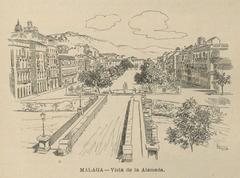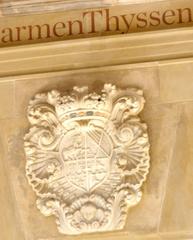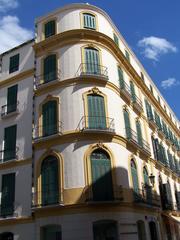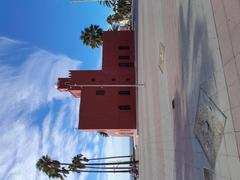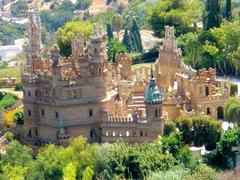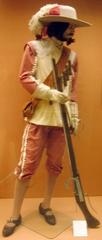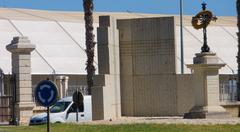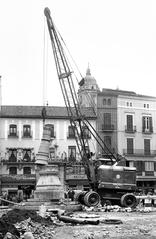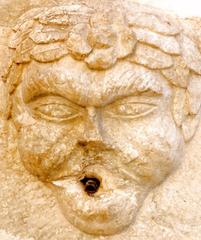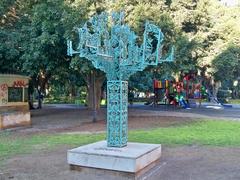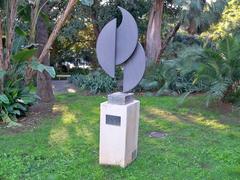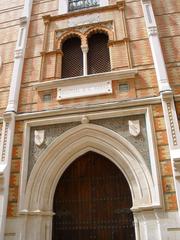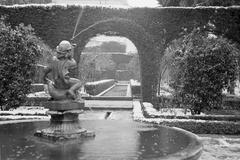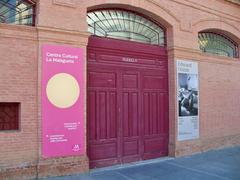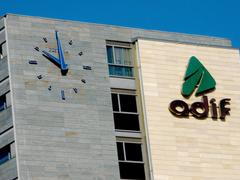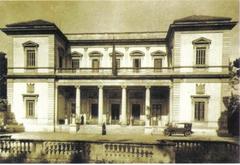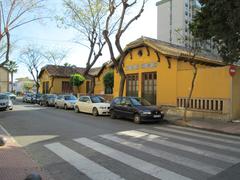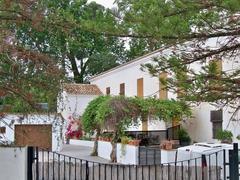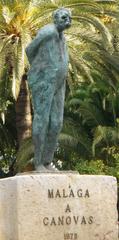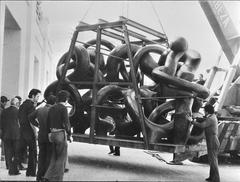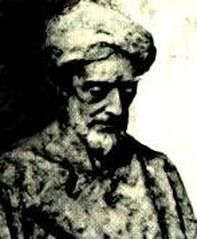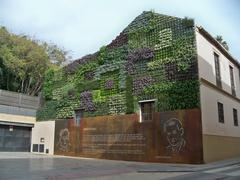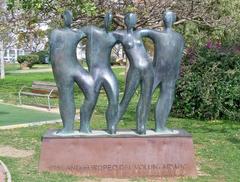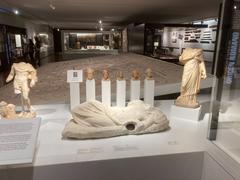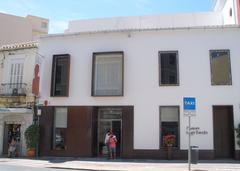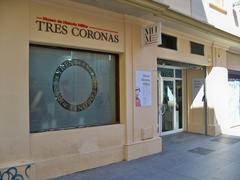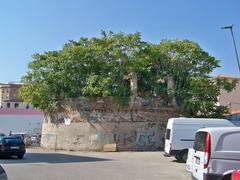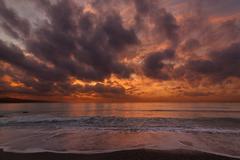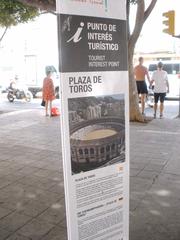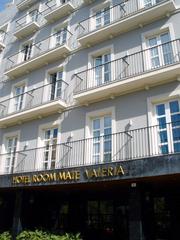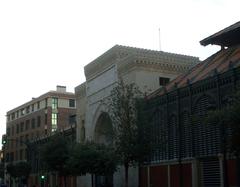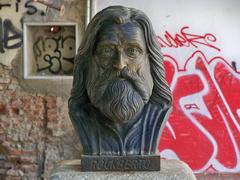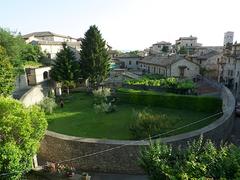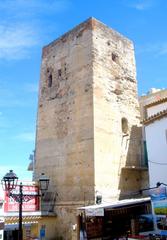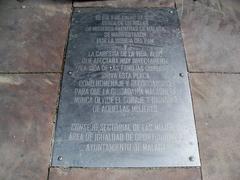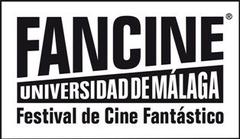
La Trinidad Málaga Visiting Hours, Tickets, and Historical Sites Guide
Date: 04/07/2025
Introduction to La Trinidad Málaga and Its Historical Significance
La Trinidad, one of Málaga’s most storied neighborhoods, is a vibrant tapestry of history, culture, and architectural heritage. Originating after the Christian conquest of Málaga in 1487, La Trinidad took shape around the Convento de la Trinidad, a 16th-century religious institution noted for its blend of Renaissance and Mudéjar styles. This convent was established on the site of Queen Isabella’s military camp during the Reconquista, symbolizing La Trinidad’s deep historical roots (malagahistoria.com).
During the 17th and 18th centuries, La Trinidad became one of Málaga’s most populous districts, characterized by “corralones” (traditional patio houses) and a strong community life centered on religious and charitable institutions. Today, it offers visitors a unique Andalusian experience, marked by architectural diversity—from Moorish and Renaissance to Baroque and modernist influences—as seen in landmarks such as the Monastery of La Merced and the Parish Church of La Trinidad (e-a-a.com). The area is also celebrated for its lively streets, local festivals, art galleries, and traditional markets, such as Atarazanas (voyagetips.com).
While the Convento de la Trinidad is currently under restoration and not open to the public, plans to transform it into a multidisciplinary cultural center signal a promising future for this historic site (laopiniondemalaga.es). Meanwhile, visitors can explore the neighborhood’s rich heritage through guided tours, accessible public transportation, and a range of accommodation options that combine comfort with local character (staylibere.com).
This guide provides essential information on visiting hours, ticketing, accessibility, and local highlights to help you plan an enriching visit to La Trinidad, Málaga.
Table of Contents
- Origins and Early Development of La Trinidad
- The Convento de la Trinidad and Urban Growth
- Expansion in the 17th and 18th Centuries
- Urban Transformation and Social Fabric
- Cultural and Religious Significance
- Notable Landmarks and Historical Events
- Visiting La Trinidad: Hours, Tickets, and Tours
- Nearby Attractions and Special Events
- Architectural Heritage of La Trinidad, Málaga
- Discover La Trinidad Málaga: A Historic Neighborhood with Rich Culture and Visitor Highlights
- Visitor Tips and Practical Information
- Summary of Key Points and Visitor Recommendations
- References
Origins and Early Development of La Trinidad
The roots of La Trinidad trace back to the aftermath of the Christian conquest in 1487, when the area—then outside the medieval city walls on the Guadalmedina River’s western bank—served as Queen Isabella’s military encampment. Archaeological findings have indicated the presence of the “Campamento Real de Isabel La Católica” beneath the current convent, highlighting the neighborhood’s strategic significance during the final stages of the Reconquista (malagahistoria.com).
In 1492, the Catholic Monarchs allocated this land to the Trinitarian Order. After an initial settlement near Puerta del Mar was abandoned due to unsuitable conditions and an earthquake, the Trinitarians moved to the former royal camp, establishing the Hermitage of San Onofre, which became the foundation for the future Convento de la Trinidad.
The Convento de la Trinidad and Urban Growth
Constructed in the 16th century, the Convento de la Trinidad (also known as Convento de San Onofre de Padres Trinitarios Calzados) became the nucleus of the neighborhood. Its Renaissance and Mudéjar features, especially the cloister’s arches and marble columns, stand as hallmarks of the period. Over time, the convent also served military functions, including as a barracks for the Guardia Civil (malagahistoria.com).
This religious anchor spurred gradual urbanization, with the area evolving from fields and orchards to a network of narrow, winding streets and modest houses, shaped organically by the growing community.
Expansion in the 17th and 18th Centuries
The 17th century saw significant growth, marked by the construction of the Iglesia de San Pablo in 1649 to meet the needs of the expanding population. The area’s development continued into the 18th and 19th centuries, with the population boom transforming La Trinidad into one of Málaga’s largest districts. By 1845, records show that together with El Perchel, La Trinidad housed nearly a third of the city’s residences (malagahistoria.com).
Urban Transformation and Social Fabric
The 19th and 20th centuries brought modernization, including the construction of Puente de la Aurora and the widening of Calle Mármoles, improving connectivity to the city center. La Trinidad is renowned for its “corralones,” communal patio houses that fostered a strong sense of community—an enduring feature of Andalusian urban culture (housinganywhere.com).
Cultural and Religious Significance
La Trinidad’s identity is closely tied to its religious institutions, particularly the Convento de la Trinidad and Iglesia de San Pablo. The neighborhood is associated with the veneration of local saints like Ciriaco and Paula, commemorated in the nearby Martiricos area (malagahistoria.com). Its streets have long been the backdrop for religious processions, festivals, and charitable activities.
Notable Landmarks and Historical Events
- Convento de la Trinidad: A 16th-century landmark representing the area’s origins and religious heritage (malagahistoria.com).
- Iglesia de San Pablo: Founded in the 17th century, this church remains a major focal point for local religious life.
- Calle Mármoles: A historically significant street, modernized in the 19th century.
- Martiricos: Area named in honor of Ciriaco and Paula, young saints martyred for their faith.
Visiting La Trinidad: Hours, Tickets, and Tours
Visiting Hours and Tickets
- Convento de la Trinidad: Currently closed for restoration. Once reopened, expected visiting hours are Tuesday to Sunday, 10:00 AM–6:00 PM. Entrance is typically free; special exhibitions or guided tours may require a fee (laopiniondemalaga.es).
- Iglesia de San Pablo: Open daily, 9:00 AM–7:00 PM. Free entry.
Accessibility
La Trinidad is served by city buses and metro, with modernized streets like Calle Mármoles offering improved pedestrian access. Major sites are wheelchair-accessible, though some older streets may be less navigable.
Guided Tours
Multiple local operators offer walking tours that cover La Trinidad’s history, architecture, and culture. Book in advance during peak seasons.
Travel Tips
- Visit in the morning for a quieter experience.
- Wear comfortable shoes for uneven historic streets.
- Exercise normal precautions against petty theft in crowded areas.
Nearby Attractions and Special Events
- Alcazaba of Málaga: Moorish fortress with panoramic views.
- Museo Picasso Málaga: Dedicated to the city’s most famous artist.
- Festivals: La Trinidad’s Holy Week processions and the Feast of Santos Mártires are cultural highlights (voyagetips.com).
Architectural Heritage of La Trinidad, Málaga
Historical Layers and Urban Fabric
La Trinidad’s urban landscape reveals a blend of Moorish, Renaissance, Baroque, and modernist influences. The street layout, with its narrow alleys and small plazas, echoes the neighborhood’s medieval roots, while 19th- and 20th-century residential buildings bear witness to its working-class and artisanal legacy (e-a-a.com).
Religious and Monumental Architecture
Monastery of La Merced
Founded in 1620, the Monastery of La Merced is a Baroque masterpiece featuring robust stonework, ornate facades, and tranquil cloisters. Its church is notable for richly decorated altarpieces and vaulted ceilings. Recent restorations have secured its role as a focal point for cultural tourism. Open Tuesday–Sunday, 10:00 AM–6:00 PM; free entry, with guided tours available for a fee (audiala.com).
Parish Church of La Trinidad
Built in the 18th century, this church is distinguished by its restrained Baroque façade and bell tower, and is open daily, 9:00 AM–1:00 PM and 5:00 PM–8:00 PM.
Residential and Vernacular Architecture
La Trinidad features a diverse mix of traditional Andalusian houses, 19th-century apartments, and early 20th-century modernist villas, often adorned with whitewashed facades, wrought-iron balconies, and tiled courtyards.
Public Spaces and Social Hubs
Neighborhood plazas and the nearby Atarazanas Market (with its 19th-century ironwork and stained glass) are central to local life and culture (voyagetips.com).
Artistic and Cultural Institutions
The Museum Jorge Rando, located in a restored historic building, is a hub for expressionist art. Open Tuesday–Sunday, 11:00 AM–7:00 PM; general admission €6, with concessions available (audiala.com).
Cultural Traditions and Festivities
La Trinidad is renowned for its vibrant Holy Week processions and the Feria de Málaga, offering immersive experiences of Andalusian tradition.
Preservation and Revitalization Efforts
Ongoing restoration projects and community initiatives aim to balance development with heritage preservation, such as the adaptive reuse of industrial sites and the careful restoration of key landmarks.
Practical Visitor Tips
- Access: Easily reached by bus (lines 3, 11, 27) or on foot from the city center.
- Guided Tours: Available daily; advance booking is recommended.
- Local Cuisine: Sample Andalusian dishes at tapas bars and markets.
- Events: Check local listings or the Audiala app for current events.
Discover La Trinidad Málaga: A Historic Neighborhood with Rich Culture and Visitor Highlights
The Historic Convento de la Trinidad: Visiting Information
The Convento de la Trinidad is currently under restoration, with no public visiting hours or ticket sales. Once reopened, the site will host exhibitions and cultural events (laopiniondemalaga.es). Updates will be available through official Málaga tourism channels.
Everyday Life in La Trinidad
La Trinidad is characterized by a blend of established families and newcomers, peaceful streets, and community engagement, especially in heritage preservation efforts (ubicabarrios.com).
Accommodation Options
Líbere Málaga Trinidad Serviced Apartments offer modern amenities including kitchens, pet-friendly policies, accessible facilities, and proximity to key transport links (staylibere.com). Traditional guesthouses also provide affordable, local hospitality.
Gastronomy and Culture
Enjoy local specialties such as pescaíto frito, gazpacho, and traditional sweets. La Trinidad’s street art, markets, and festivals contribute to its lively atmosphere (voyagetips.com; visitsouthernspain.com).
Getting Around
The neighborhood is easily walkable, with excellent bus and metro connections. Standard urban safety precautions apply.
Visitor Tips and Practical Information
- Transport: Walk, use EMT buses, or the metro. Taxi and rideshare services are also available (visit-malaga.net; malagatop.com).
- Accessibility: Streets are mostly flat and accessible, though some older buildings may lack elevators.
- Language: Spanish is the official language; basic phrases are helpful.
- Currency: Euro (€); carry some cash for small purchases.
- Climate: Mediterranean, with hot summers.
- Safety: Generally safe; remain vigilant in crowded areas (thevivalavita.com).
- Events: Semana Santa, Feria de Málaga, and other local festivals showcase the neighborhood’s culture.
Summary of Key Points and Visitor Recommendations for La Trinidad Málaga
La Trinidad offers an immersive Andalusian experience, blending centuries-old landmarks like the Convento de la Trinidad, Monastery of La Merced, and Parish Church of La Trinidad with vibrant community life and cultural events (malagahistoria.com; e-a-a.com). Restoration projects and community initiatives ensure the neighborhood’s heritage is preserved for future generations. With its proximity to major attractions, accessible transport, and authentic local flavor, La Trinidad is an essential destination for visitors to Málaga (audiala.com; laopiniondemalaga.es).
References and Further Reading on La Trinidad Málaga
- malagahistoria.com
- e-a-a.com
- laopiniondemalaga.es
- staylibere.com
- voyagetips.com
- visit-malaga.net
- malagatop.com
- theorangebackpack.nl
- thevivalavita.com
- worldwildhearts.com
- audiala.com

